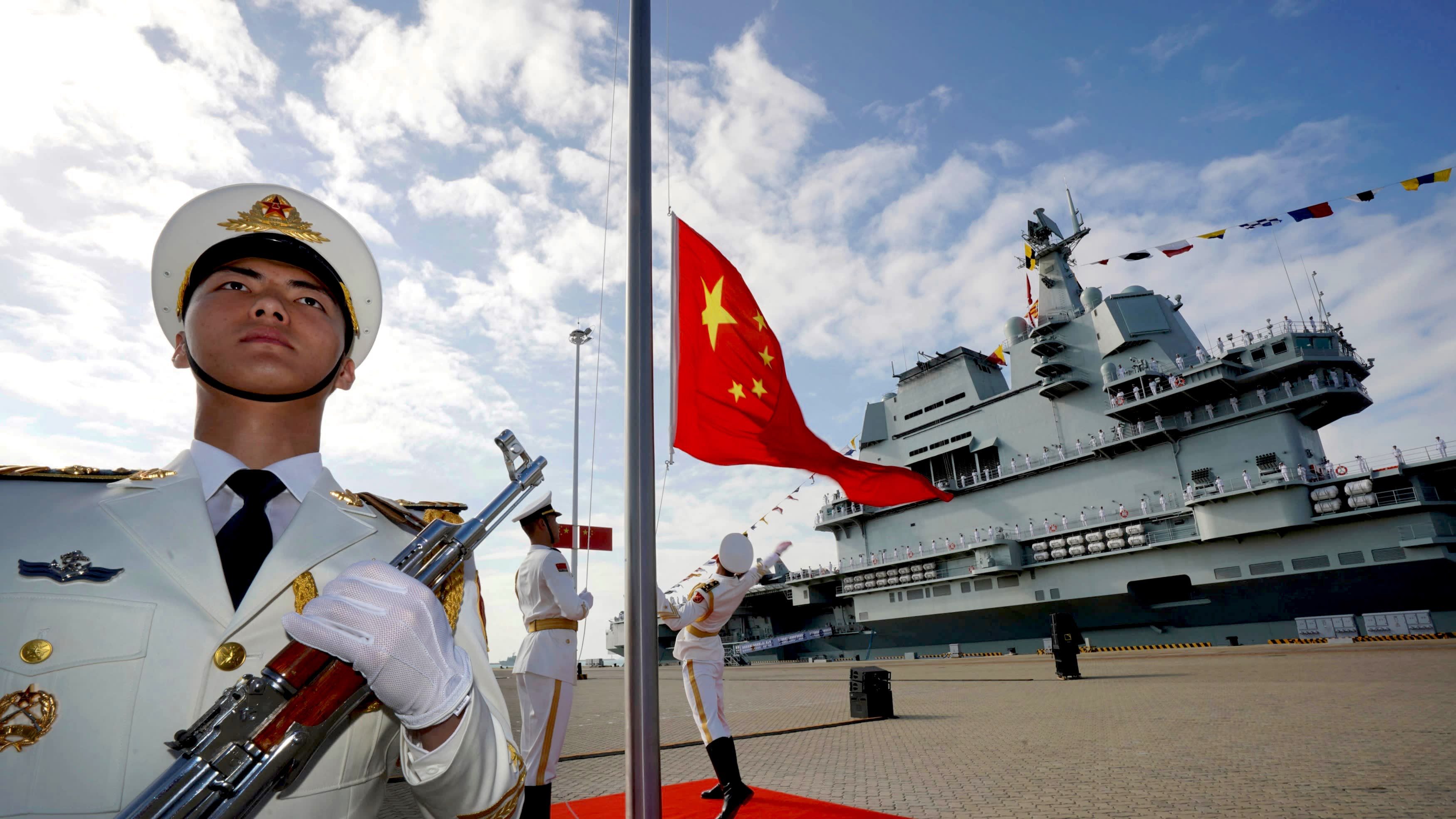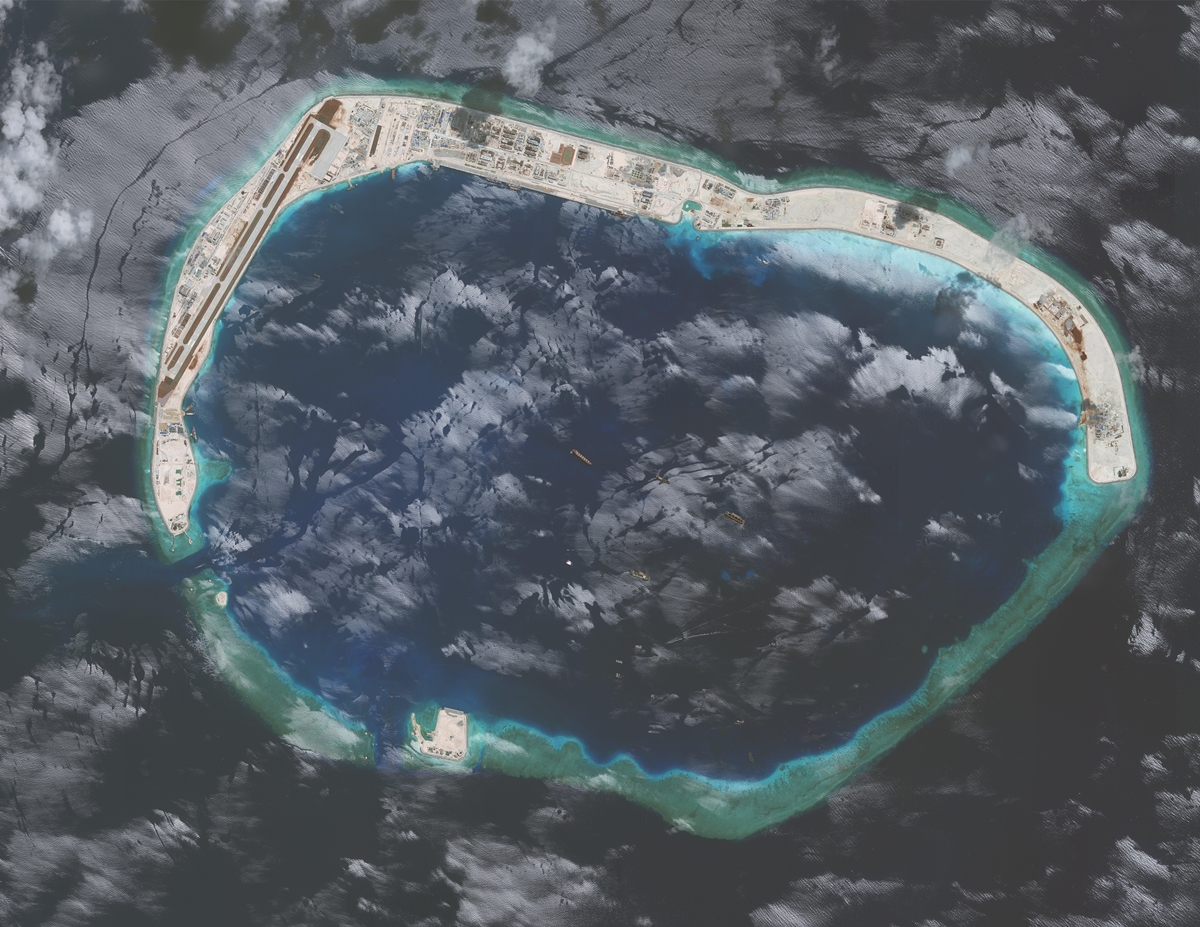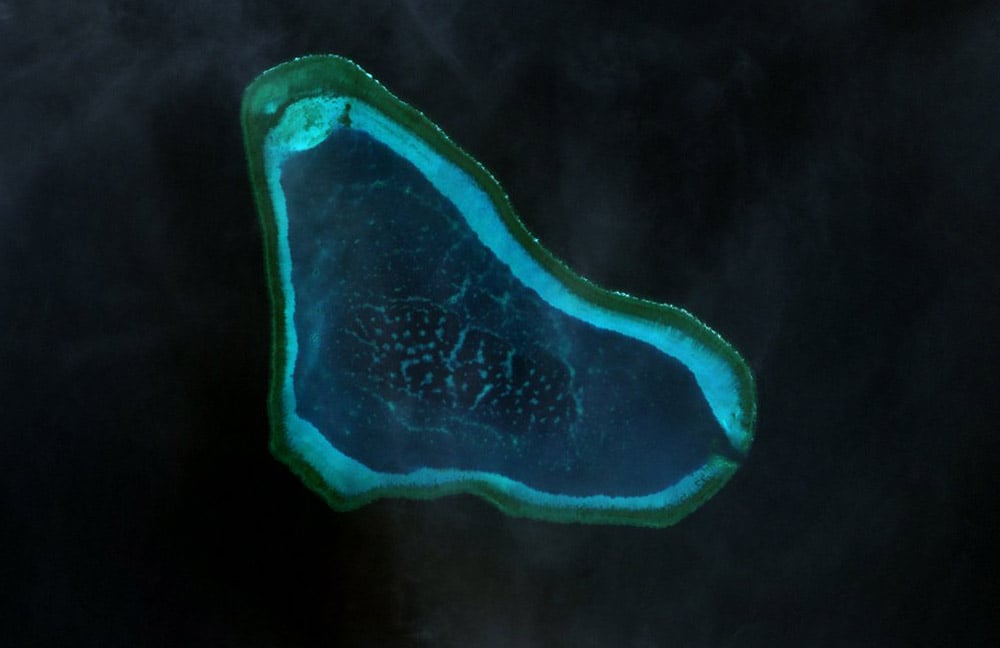
KUALA LUMPUR — Chinese officials are pushing back against the U.S. statement contesting Beijing’s claims to the South China Sea, while other nations in the region are attempting to stay out of the public conflict between the two nations.
On Monday, Secretary of State Mike Pompeo issued a formal statement rejecting China’s claims to much of the offshore resources in the South China Sea as unlawful and accused Beijing of coercing its neighbors.
“We are making clear: Beijing’s claims to offshore resources across most of the South China Sea are completely unlawful, as is its campaign of bullying to control them,” he said.
Pompeo said the United States seeks to preserve peace and stability, uphold freedom of the seas in a manner consistent with international law, maintain the unimpeded flow of commerce, and oppose any attempt to use coercion or force to settle disputes – and that these interests were shared with U.S. allies and partners who have long endorsed a rules-based international order.
Pompeo said China had no legal grounds to impose its will in the region. He questioned the legal basis of the “Nine-Dashed Line” claim in the South China Sea, which was formally announced in 2009, and he pointed out that in July 2016 a tribunal unanimously rejected the PRC’s maritime claims to the region as having no basis in international law. “The Tribunal sided squarely with the Philippines, which brought the arbitration case, on almost all claims” he said.
Pompeo concluded, “the world will not allow Beijing to treat the South China Sea as its maritime empire” and said the United States stood with its allies and partners in protecting their sovereign rights to offshore resources, consistent with their rights and obligations under international law.
Chinese foreign ministry spokesman Zhao Lijian told reporters on Tuesday that the U.S. statement was “groundless” and was an effort by Washington to sow discord between Beijing and Southeast Asian nations.
“China is not seeking to become a maritime empire. China treats its neighboring nations on an equal basis and exercises the greatest restraint,” Zhao said.
He added that the United States frequently dispatched advanced warships and military aircraft to the South China Sea that militarize the region.

“The U.S.is the destructor and troublemaker to peace and stability in the region,” he said. The Chinese Embassy in Washington also issued a press statement on Tuesday which said “the U.S. Department of State issued a statement that disregards the efforts of China and ASEAN countries for peace and stability in the South China Sea, deliberately distorts the facts and international law including the United Nations Convention on the Law of the Sea (UNCLOS), exaggerates the situation in the region and attempts to sow discord between China and other littoral countries. The accusation is completely unjustified.”
The statement continued on to state that China’s position on the South China Sea issue has been consistent and clear-cut and that China has been working on negotiations and discussions towards a peaceful resolution of the disputes. It added, “the United States is not a country directly involved in the disputes. However, it has kept interfering in the issue. Under the pretext of preserving stability, it is flexing muscles, stirring up tension and inciting confrontation in the region.” It pointed out the U.S. was using the United Nations Law of the Sea Convention to attack China while the U.S. itself never ratified the convention.
So far, ASEAN countries have not officially issued any response to Pompeo’s statement. Collin Koh, research fellow at Singapore’s S. Rajaratnam School of International Studies, told USNI News that he did not expect a bloc statement from ASEAN.
“Currently, ASEAN member states are assiduously avoiding to be seen as taking sides. And even Vietnam, which is the most steadfast rival to China in the South China Sea, had its prime minister saying during the recent ASEAN summit that the country and ASEAN don’t wish to take sides because both the U.S. and China are regarded as important partners,” Koh said.
ASEAN countries involving in disputes with China have been making efforts to bolster their military capabilities over the years as a result of China’s activities. The Philippines on July 10 formally commission the first of two guided-missile frigates ordered in 2016: BRP Jose Rizal (FF150), built by South Korea’s Hyundai Heavy Industries. Jose Rizal will participate in the U.S. Navy’s RIMPAC 2020 exercise in Hawaii, while the second ship, BRP Antonio Luna (FF151), will be delivered in September.
Indonesia has set up tri-service joint base in the Natunas – though the move has been said by some to be part of a broader overall move to reorganize the Indonesian military to operating in a joint manner, along with being part of the overall restructuring of Indonesia’s defense posture, rather than being geared specifically to counter China’s claims there.
The Royal Malaysian Navy, though, has faced some setbacks in its efforts. In 2013, the RMN announced plans for the service to take over part of the commercial port of Bintulu, where it already operated from, to turn it into a naval base. The base would be home to a regional naval command headquarters that would allow the navy to better sustain and conduct presence and patrol operations around the nearby James Shoals and Luconia Shoals. That plan has been since been mired in a deadlocked discussion between the RMN and the Sarawak state government over the payment amount for the port facilities and land to be taken over by the RMN.
At the same time, the RMN’s program for six Maharaja Lela-class Littoral Combat Ships, based on the Naval Group’s Gowind-class corvette design, has been a troubled program. The ships were ordered in 2011, and the delivery of the first ship originally scheduled for 2018 has since been pushed back to 2022.

In a related development, Malaysia’s Auditor General on recently revealed the number of incursions carried out by PLAN and China Coast Guard Ships in Malaysia’s maritime waters. A chart released by the Royal Malaysian Navy for the report showed that between 2016 and 2019 there were 238 incursions by foreign ships. Chinese Navy and Coast Guard ships accounted for 89 of those off East Malaysia, while the remaining ships consisted of foreign fishing vessels in Malaysia’s Maritime Zone.





